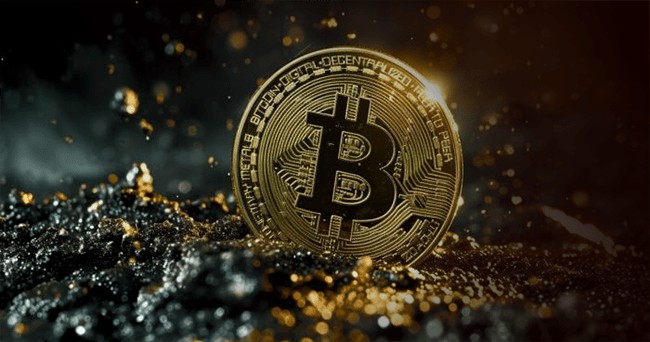The emails were shared as evidence by early Bitcoin contributor Martii Malmi as part of his testimony in the Cryptocurrency Open Patent Alliance (COPA) v. Craig Wright trial.

Private email communications between anonymous Bitcoin creator Satoshi Nakamoto and Martii Malmi, an early contributor to the project, further reveal the flagship cryptocurrency’s origin story and its creator’s earliest ideas for the future.
The emails were shared as part of Malmi’s testimony in the Cryptocurrency Open Patent Alliance (COPA) trial against Craig Wright. The trial has been ongoing since early February and will determine whether Wright's claims of creating Bitcoin have any substance.
never seen before email
A set of emails relates to early conversations between Satoshi Nakamoto and Malmi, who contributed to the Bitcoin website and project code starting in 2009.
The emails provide insight into Satoshi Nakamoto’s earliest expectations for Bitcoin and its future growth. Based on the emails, he was aware of the challenges Bitcoin could face regarding its legal status.
He wrote in an email:
"There are a lot of things you can say on a sourceforge site that I can't say on my own site... Even so, I don't feel comfortable saying explicitly 'think of it as an investment.' It's dangerous to say that, You should remove that bullet point. It’s okay if [Bitcoin users] come to that conclusion on their own, but we can’t say that.”
Whether cryptocurrencies and related products qualify as investment contracts has been a key point of debate between the industry and regulators, most notably the U.S. Securities and Exchange Commission.
After years of negative sentiment, Bitcoin has generally become a commodity, with many considering it "digital gold." This is mainly because it was originally issued through mining rather than investment contracts, although Bitcoin exchanges allowed users to purchase crypto assets as early as 2010.
Incidentally, these emails describe the creation of one of the first Bitcoin exchanges. Satoshi Nakamoto was looking for ideas for Bitcoin applications, and Malmi suggested establishing a fiat-to-Bitcoin exchange.
As previously known, Malmi continues to operate and register Bitcoinexchange.com. However, the latest emails reveal that Satoshi Nakamoto has been a key advisor to the exchange.
Satoshi suggested that Malmi initially operate the exchange alone, rather than creating an “eBay-type” or peer-to-peer exchange. He also abandoned plans to incorporate an auction system in favor of Malmi's idea of ??setting the exchange rate.
In addition, Satoshi received $3,600 in donations, $1,000 of which was used to support the initial operations of the exchange.
Other topics include anonymity, mining profits, fees
Satoshi Nakamoto also created an early distinction between anonymous and pseudonymous (or partially anonymous) transactions. He expects controversy to arise from transactional analysis, now a staple of companies like Chainaanalysis and Elliptic.
Satoshi Nakamoto wrote at the time:
“I think we should de-emphasize the anonymity angle… We can’t give the impression that [Bitcoin] is automatically anonymous. Anonymity is possible, but… if someone mines transaction history and starts to reveal information that people think is anonymous , if we are not prepared as expected, the rebound will be more severe..."
Satoshi and Malmi also discussed other topics such as mining profits, electricity consumption, and Bitcoin’s potential environmental impact. Regarding environmental issues, Satoshi Nakamoto wrote:
“It would be a travesty if we ultimately had to choose between economic freedom and conservation.”
He told Malmi that “unfortunately,” the proof-of-work consensus method is the only way to ensure that Bitcoin can “work” without a trusted third party. He added that this was "fundamental" to preventing double spending.
Satoshi Nakamoto didn’t seem fazed by the idea of ??putting so much effort into the Bitcoin network. Even if "it does grow to consume significant amounts of energy," he writes, it won't be as "wasteful" as the resources expended on "traditional banking activities."
He further stated:
“The cost will be an order of magnitude less than the billions in bank fees that cover all the bricks and mortar buildings, skyscrapers and spammy credit card offers.”
Satoshi was also keenly aware that electricity prices would affect mining profitability. His analysis at the time failed to take into account how rapidly the mining industry had grown since the advent of ASIC devices. However, the emails show that he is concerned about how fast technology will develop in the coming years.
“The value of Bitcoins is related to the electricity consumed to produce them. If you run a computing task 24/7 and don’t let it idle, it will consume more electricity. At the same time, the extra watts consumed will be directly calculated into your electricity bill. bill, and the value of the Bitcoins you produce will be less than that number.”Another topic discussed by the two developers included the possibility of using Bitcoin timestamp data. Later, Satoshi Nakamoto's own genesis block transaction contained a famous financial headline.
The emails also reveal discussions surrounding Satoshi Nakamoto’s original decision to “hide transaction fee settings” because he believed the ability to customize fees would confuse users. He predicted fee adjustments wouldn't be needed until "far into the future, if at all."
The prediction about Satoshi Nakamoto was partially correct. Prior to 2017, the average Bitcoin transaction cost was only a few cents, but costs have increased significantly over the years, and recently transaction costs were often a few dollars.
Email may refute Craig Wright's claims
Crucially, Malmi’s email contradicts some of the claims Wright has made over the years in his attempts to prove he is Satoshi Nakamoto.
Wright said Malmi first contacted Nakamoto in February 2009. However, email records show that Malmi contacted Satoshi a few months later, in May 2009.
Another inconsistency Malmi pointed out was that Wright misspelled Malmi's name in court, which was inconsistent with the character of Satoshi Nakamoto, who knew him well.
Another contradiction arises from the fact that Wright incorrectly identified Malmi's nationality, even though the emails contained Finnish email addresses ending in .fi and, in one case, Malmi's full street address, including his country /area.
Wright also claimed in a previous case that Malmi created the darknet market Silk Road. Presumably, this led to Wright (who played Satoshi Nakamoto) publicly quitting Bitcoin in 2010.
Malmi called the accusations "ridiculous and false" in a witness statement. He pointed out that Ross Ulbricht was convicted many years ago for creating and operating an illegal darknet business.
The outlet previously reported on emails filed between Nakamoto and Adam Back as part of COPA's broader effort to counter Wright's claims in court. #比特幣 #中本聰
